How to Redesign Terminals for the Best Next-Gen Consumer Experience (Part 2)
Paula Santos
November 8, 2023
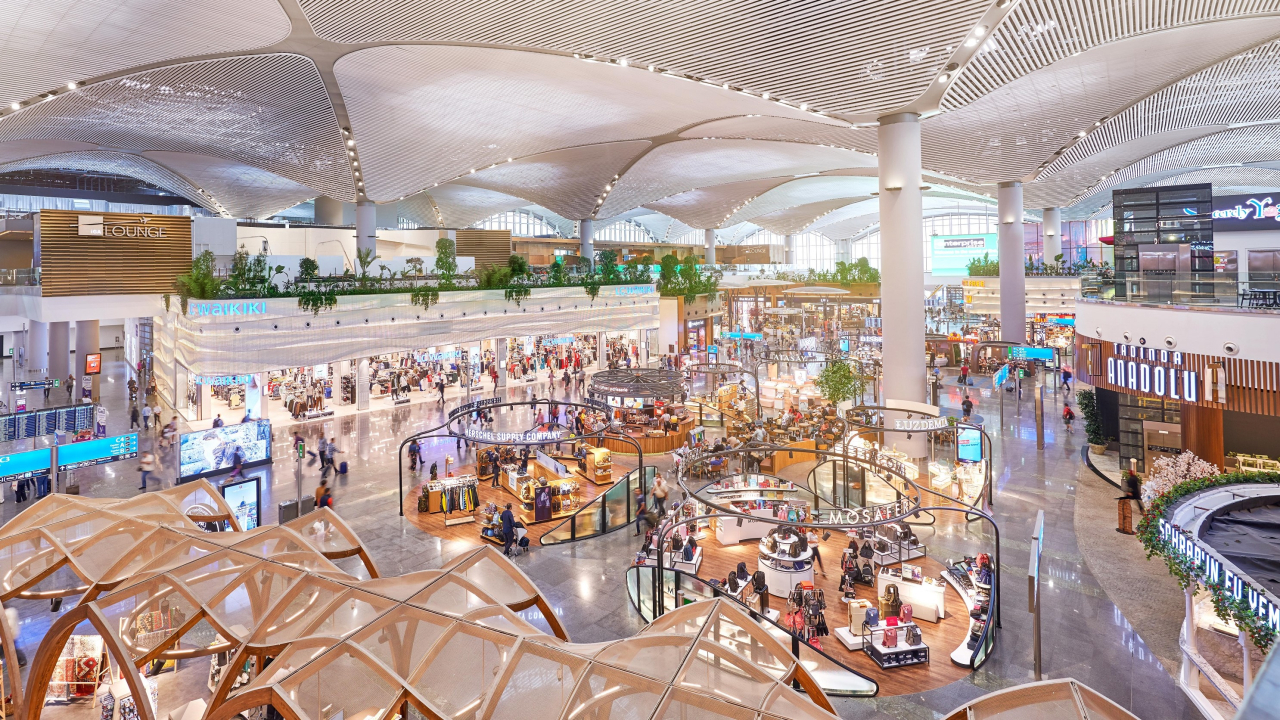
Istanbul Airport's expansive and open retail offer.
© IGA
Last week, the reasons why airports need to evolve from conventional transit hubs into experiential destinations were clearly outlined. Here we explore 10 innovative ways this can be achieved to better engage passengers from the viewpoint of terminal layout and next-generation commercial concepts.
TERMINAL LAYOUT INNOVATIONS
As I said in Part 1, the modern airport terminal has evolved into a multifaceted environment, providing a holistic travel experience. Airports are using more innovative terminal layouts to prioritize passenger comfort, convenience, and efficiency.
Placing the passenger at the center of the design process creates environments that facilitate smooth transitions and elevates the overall travel experience. By integrating the following features into airport terminal designs, airports can create vibrant and engaging environments.
1. Centralized Areas & Marketplaces
Centralized commercial areas offer easy access for passengers and enhance visibility for retail and service providers. These zones often feature a carefully curated mix of retail, dining, and entertainment options, strategically placed to attract the attention of travelers during their dwell time. By consolidating commercial activities into hubs, airports can create bustling spaces that encourage exploration.
2. Flexible Spaces
Embracing the concept of adaptable and multi-functional spaces allows airports to respond to changing passenger needs and market trends. By incorporating modular and versatile design elements, airports can quickly transform commercial areas to accommodate different activities and events, such as pop-up shops, seasonal promotions, or cultural exhibitions. This enables airports to stay relevant and dynamic, catering to the evolving demands of passengers while optimizing revenue-generating opportunities.
3. Open Units and Department-store Concepts
Implementing open commercial units that can be multi-brand and/or multi-operator, ensures a sense of accessibility and transparency, inviting passengers to explore diverse offerings without feeling confined by traditional storefronts. Open units often feature interactive displays, product demonstrations, and engaging customer experiences, creating an immersive shopping environment that encourages active participation and fosters a strong connection between consumers and brands.
4. Integrated Categories
Introducing integrated commercial categories enables a seamless and holistic shopping experience. By grouping related retail, F&B, and service offerings in one unit or close proximity, airports can facilitate cross-selling and enhance the overall shopping journey. Integrated categories may include zones such as Travel Essentials, Luxury Boutiques, Local Artisanal Products, and Duty-Free Shopping, allowing travelers to navigate a diverse array of offerings.
5. Sustainability and Comfort
In an era of heightened environmental consciousness, airports are taking significant strides toward sustainability. Embracing eco-friendly practices such as energy-efficient lighting and sustainable materials, contributes to a more environmentally responsible travel ecosystem. Simultaneously, a strong emphasis on passenger comfort is reflected by, for example, incorporating ergonomic seating, relaxation zones, and wellness facilities, to create a stress-free environment for travelers to unwind and rejuvenate. The use of natural light, high ceilings, and direct views of the airfield also contribute to the overall ambiance quality.
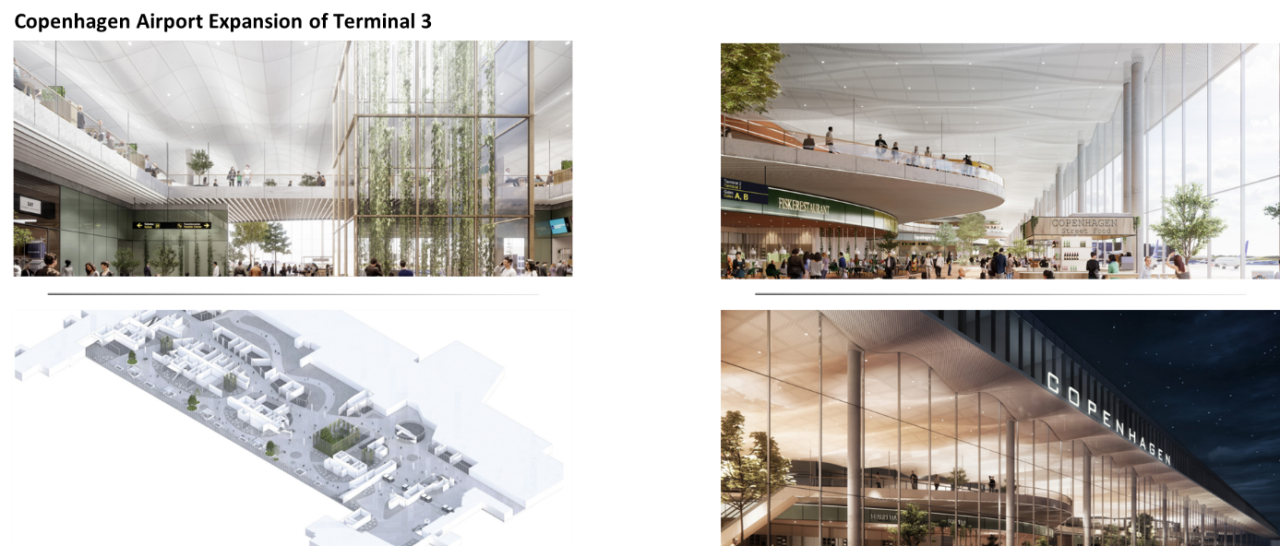
Space and light are dominant themes in these designs for Copenhagen Airport.
© Kilsa Group
NEXT-GENERATION COMMERCIAL CONCEPTS
The notion of airports as mere transit points for duty-free shopping is rapidly giving way to a more nuanced understanding of airports as retail and entertainment hubs. Acknowledging the diverse preferences of travelers, airports are embracing a new wave of commercial concepts that blur the lines between travel and leisure.
Experiential retail spaces featuring immersive displays and interactive exhibits are capturing the attention, transforming mundane layovers into memorable experiences. Additionally, digital engagement platforms enable airports to offer personalized recommendations and services, fostering a sense of exclusivity and tailored experiences for each passenger.
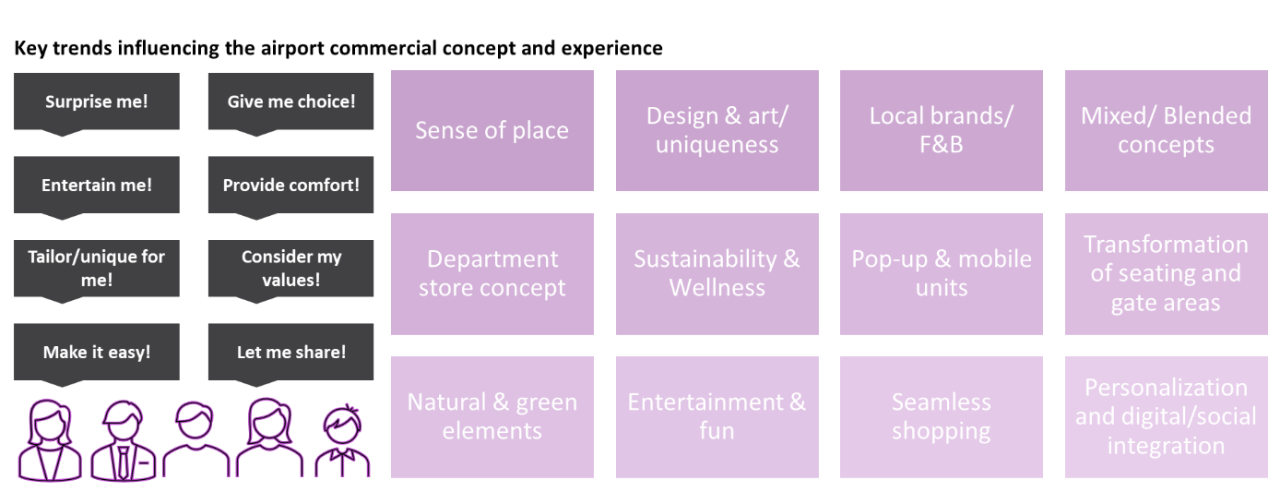
© Kilsa Group
1. Multi-sensory Experiences
Recognizing the power of sensory engagement, airports are incorporating multi-sensory elements into their terminals. From captivating art and ambient music, to aroma-infused environments, airports are curating sensory experiences that evoke emotions and leave lasting impressions. Such initiatives not only create a sense of place and cultural immersion but establish a solid emotional connection between the passenger and the airport, that encourages repeat visits.
2. Integration of Digital Technology
The seamless integration of digital touchpoints, such as interactive wayfinding, mobile applications for personalized recommendations, and self-service kiosks, streamlines the passenger journey and enhances convenience. Additionally, the incorporation of virtual reality (VR) and augmented reality (AR) within commercial spaces allows for interactive product demonstrations and deeper brand storytelling.
3. Experiential Retail and F&B Concepts
Experiential retail and food and beverage concepts encourage passenger exploration. This involves the integration of interactive displays, live demonstrations, and engaging dining experiences that transform traditional shopping and dining activities into memorable and enjoyable moments for travelers. Additionally, the incorporation of local and culturally authentic offerings provides passengers with a sense of place that deepens their connection to the airport's host city or region.

How some airports have developed a strong sense of place.
© Kilsa Group
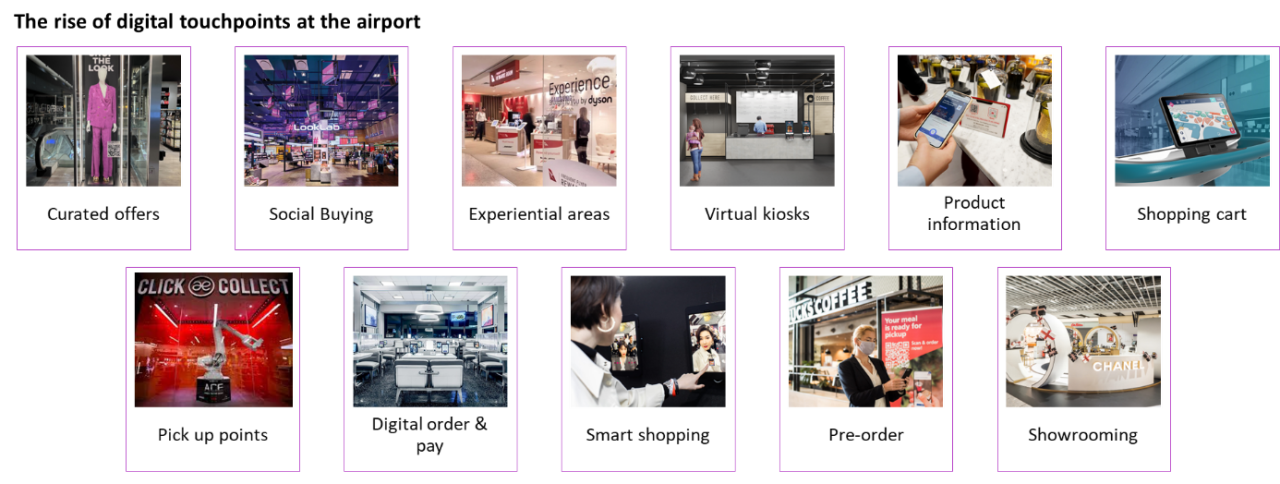
© Kilsa Group
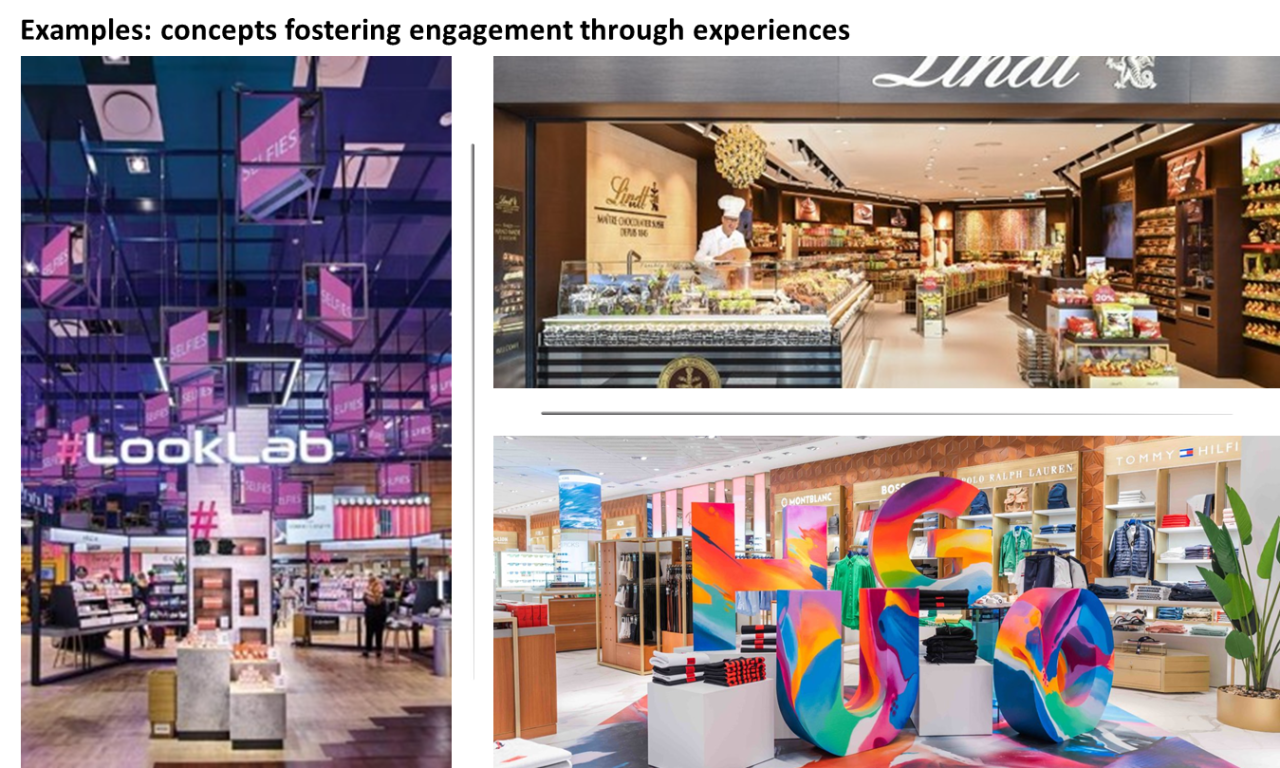
© Kilsa Group
4. Dynamic and Multi-functional Spaces
Designing dynamic and multi-functional spaces that cater to diverse passenger needs creates versatile environments that can adapt to various activities and events. These areas may include art exhibitions, live performances, or wellness activities, allowing cultural immersion and well-being for travelers. By facilitating a range of experiences beyond traditional commercial offerings, airports can appeal to a broader audience and encourage extended stays within the terminal, thereby increasing commercial revenue potential.
5. Sustainable and Wellness-Oriented Initiatives
Sustainable and wellness-oriented initiatives, including energy-efficient lighting, indoor green spaces and well-being facilities, resonate with the growing emphasis on environmental responsibility and passenger well-being. By promoting environmental consciousness and providing opportunities for relaxation and rejuvenation, airports can create a more inviting and health-conscious space for travelers, thereby fostering positive brand associations and encouraging patronage of commercial establishments that align with these values.
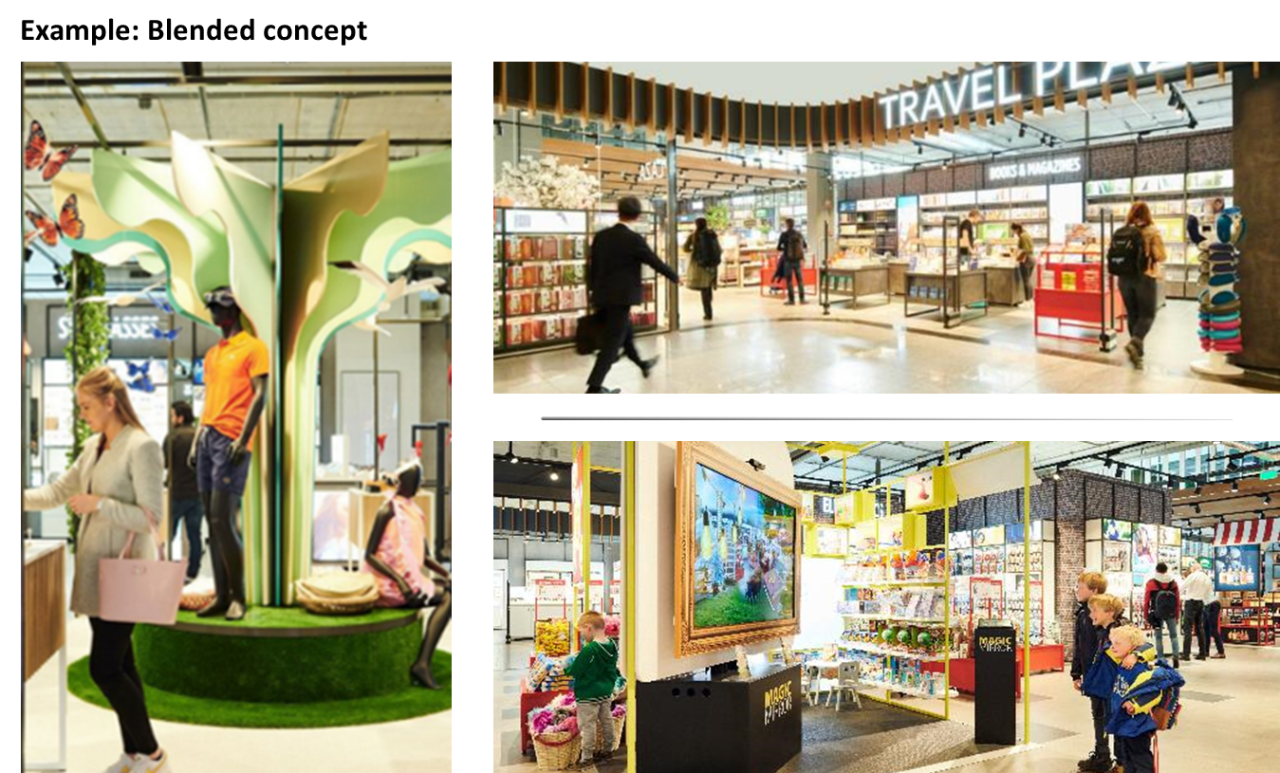
Blending categories can create a more exciting shopping space for passengers.
© Kilsa Group
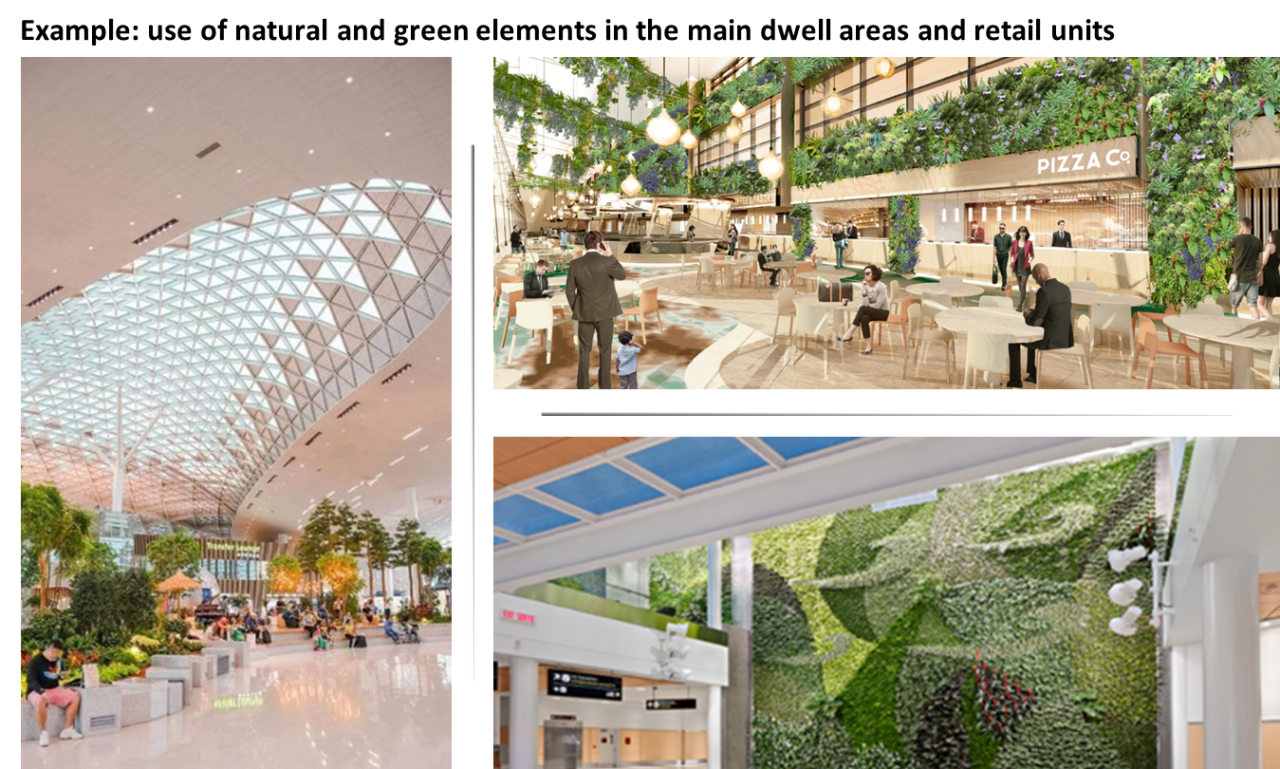
Greenery and natural light have a calming, relaxing effect.
© Kilsa Group
The combination of these innovative strategies underscores the pivotal role of airports as more than just transit hubs. By prioritizing consumer-centric approaches, integrating technology, supporting sustainability, and creating immersive environments, airports are not only adapting to the evolving demands of the travel industry but are also setting new benchmarks for excellence in consumer engagement and satisfaction.
As the world of travel continues to evolve, airports stand poised to lead the charge in delivering unparalleled and unforgettable travel experiences that transcend mere transportation.
[Paula Santos is Managing Partner of KILSA Group which optimizes non-aviation revenues for its clients. Santos is an expert in this field, with 20 years of experience in management consulting and a specialist in supporting airports and other transport infrastructures, using an integrated approach that combines market, operational, commercial, and design aspects. In the past eight years, she has also led 30 transaction-based assignments having advised on major privatization projects focusing on due diligence, detailed business models, and planning.]
